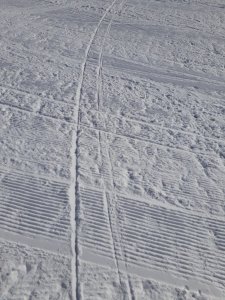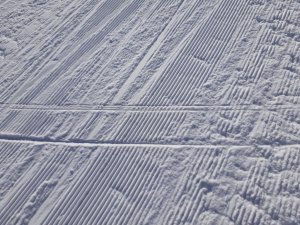If you look at the older photos, this one tells the story of the inside foot:

the inside ski is tipped at a much lesser angle than the outside ski. This is because you're loading it and not managing it properly.
the inside ski should be light and tipping into the turn just like the outside ski.
this is a great photo because it shows what happens if you don't unweight it and tip it from the foot/ankle - the knee is tipped in, but not the foot - the boot is actually tipped out by the snow pressure, it's very visible that the boot is tipped out more than the tibia - which also likely means your boots are too large and/or not done properly. You've pulled the foot back, sure enough, but not unweighted it and tipped it enough.
also - there is no evidence you're not popping up tall - those frames are missing
the inside ski is tipped at a much lesser angle than the outside ski. This is because you're loading it and not managing it properly.
the inside ski should be light and tipping into the turn just like the outside ski.
this is a great photo because it shows what happens if you don't unweight it and tip it from the foot/ankle - the knee is tipped in, but not the foot - the boot is actually tipped out by the snow pressure, it's very visible that the boot is tipped out more than the tibia - which also likely means your boots are too large and/or not done properly. You've pulled the foot back, sure enough, but not unweighted it and tipped it enough.
also - there is no evidence you're not popping up tall - those frames are missing

